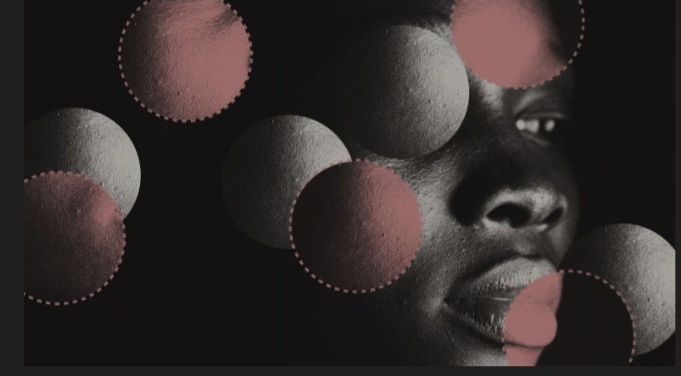An historical type of prejudice about pores and skin coloration is flourishing within the trendy web age.
by Tate Ryan-Mosley for Technologyreview/ The unique textual content seems here
When Lise was a younger teenager in Georgia, her classmates bullied her relentlessly. She had moved along with her household from Haiti a number of years earlier, and he or she didn’t slot in with the opposite college students. They teased her about her accent, claimed she “smelled bizarre,” and criticized the meals she ate. However most frequently they might assault her with remarks about her darkish complexion. Typically lecturers would ship her dwelling from college as a result of she couldn’t cease crying. “I keep in mind going dwelling and I might take these copper wire issues that you simply scrub dishes with,” she says. “I might go to the lavatory and I might take my mother’s bleach cream and scrub my pores and skin with it.”
And it wasn’t simply white classmates. Black college students harassed her too—for being an outsider, for being too totally different. She remembers them asking, “Why is she so darkish?”
Simply when she thought it couldn’t worsen, the cellphone in her palm turned an infinite stream of images of lovely, lighter-skinned girls getting dozens, tons of, and even 1000’s of likes and affirming feedback. She slowly started to note that the world needed components of her—like her curves and her lips—however not issues like her darkish pores and skin or her hair. Not her complete self, all collectively.
As she struggled to deal with the abuse, Lise satisfied herself that the darkness of her pores and skin was guilty. And social media platforms and the visible tradition of the web instructed the identical factor.
Even amongst these closest to her, the undesirability of her darkness was strengthened. She grew to appreciate that her mother, aunts, and mates all used the skin-lightening lotions she’d borrowed after college, a lot of which comprise toxins and even carcinogens. It was complicated: her neighborhood fought arduous in opposition to racism, however a number of the prejudice she skilled got here from Black folks themselves.
And social media was simply making it worse.
The bias Lise skilled—colorism—has a protracted historical past, pushed by European beliefs of magnificence that affiliate lighter pores and skin with purity and wealth, darker tones with sin and poverty. Although associated to racism, it’s distinct in that it might have an effect on folks no matter their race, and may have totally different results on folks of the identical background.
Colorism exists in lots of nations. In India, folks with darker pores and skin had been historically ranked decrease within the caste system. In China, gentle pores and skin is linked to magnificence and the Aristocracy. Within the US, folks throughout many races expertise colorism as it’s prejudice rooted primarily in complexion reasonably race. Traditionally, when African-People had been enslaved, these with lighter pores and skin had been typically given extra home duties the place these with darker pores and skin had been extra prone to work within the fields.
These prejudices have been a part of the social and media panorama for a very long time, however the introduction of digital photographs and Photoshop created new methods for colorism to manifest. In June 1994, notoriously, Newsweek and Time each ran cowl photographs of O.J. Simpson’s mug shot throughout his homicide trial—however on Time’s cowl, his pores and skin was markedly darker. The distinction sparked outrage: Time had darkened the picture in what the journal’s photograph illustrator claimed was an try to evoke a extra “dramatic tone”. However the enhancing mirrored that the darker the person, the extra legal the American public assumes him to be.
This affiliation has very actual penalties. A 2011 examine from Villanova College discovered a direct hyperlink between the severity of sentences for 12,000 incarcerated girls and the darkness of their complexion.
And as we speak, due to the prevalence of selfies and face filters, digital colorism has unfold. With Snapchat, Instagram, TikTok, and Fb part of billions of individuals’s on a regular basis lives, many people discover that folks see way more footage of us than ever earlier than. However there are biases constructed into these methods. At a fundamental degree, the imaging chips present in most private cameras have pre-set ranges for pores and skin tones, making it technically not possible to precisely seize the true number of complexions.
Over 200 million folks use Snapchat Lenses each day, a few of them to lighten their pores and skin tone. Different filters and computerized enhancing options can do the identical on Instagram and TikTok.
And the photographs that do get taken are sometimes topic to alteration. Snapchat stories that over 200 million folks use its filter product, Lenses, each day. A few of them use it to lighten their pores and skin tone; different filters and computerized enhancing options can do the identical on Instagram and TikTok. Picture applied sciences and picture filters can do that in methods which can be nearly imperceptible. In the meantime, social media algorithms reinforce the recognition of individuals with lighter pores and skin to the detriment of these with darker pores and skin. Simply this week, Twitter’s image-cropping algorithm was discovered to choose faces which can be lighter, thinner, and youthful. Continue reading

